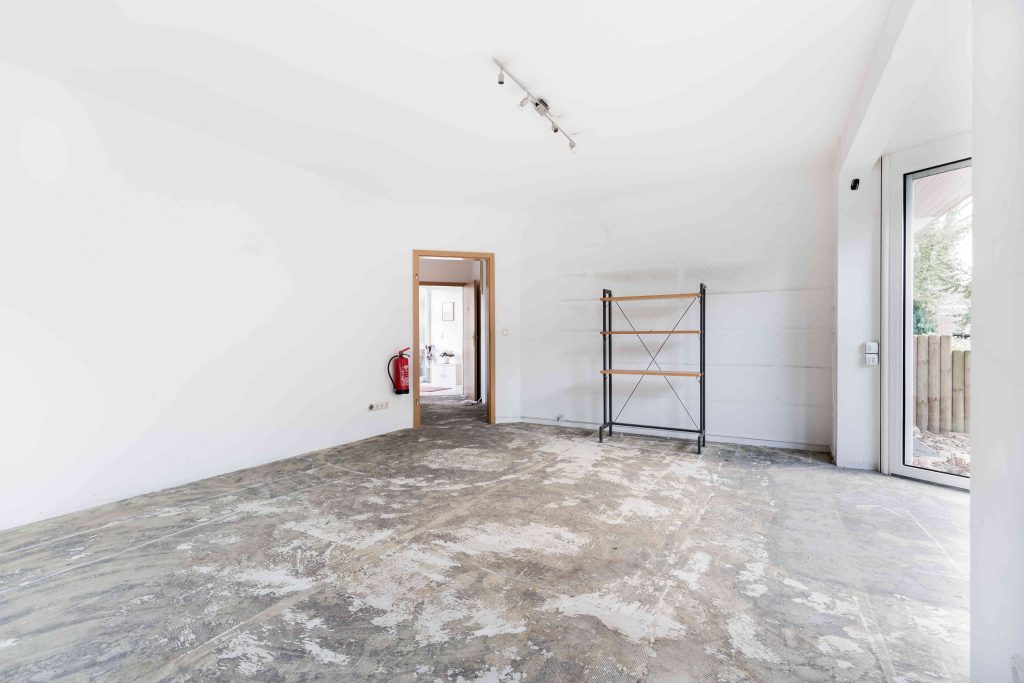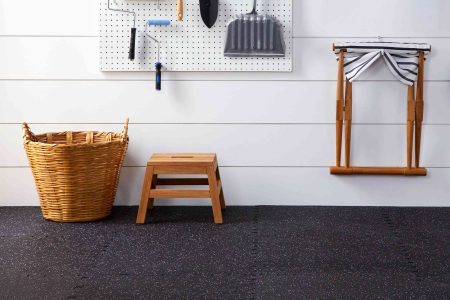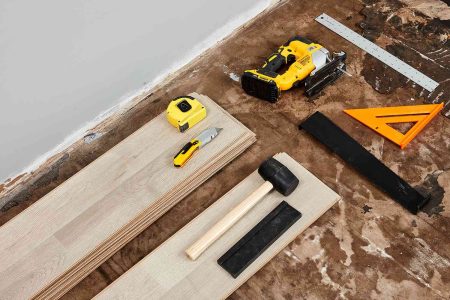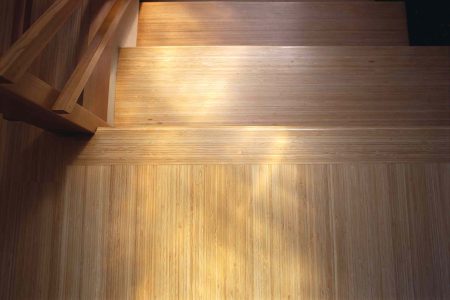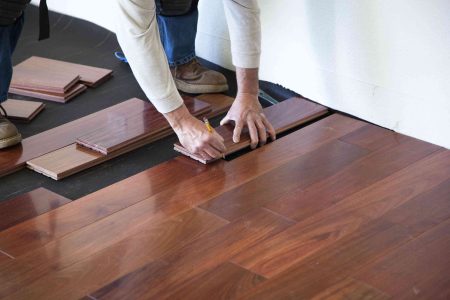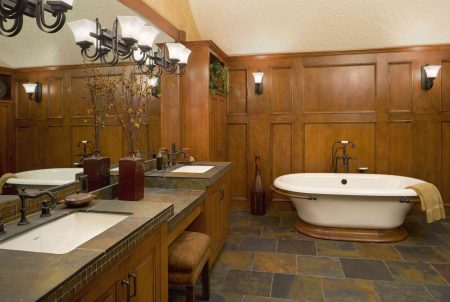Concrete slabs appear to be solid and hard, but in reality, concrete is moist and porous stuff. It begins as a liquid slurry of water, sand, cement, and aggregate, and even after it hardens, moisture continues to pass out of the concrete for years. Since concrete is so porous, it can also absorb and transfer ground moisture. While this quality of concrete doesn’t make much difference for outdoor applications, such as patios or walkways, it matters a great deal indoors, especially when you intend to install residential flooring on the concrete slab, which is why it’s a good idea to conduct a concrete moisture test.
Concrete Moisture Levels Can Affect Flooring
An acceptable moisture reading for concrete is usually 3.5 to 4.5 percent, which is considered dry for this material. Floor covering manufacturers will also list the allowable concrete moisture content on which their products can be installed. Moisture can be a problem when a floor that looks dry really isn’t. Because concrete is permeable, ground moisture can slowly move upward in the form of vapor and adversely affect anything that rests on top of the concrete. If given ample space, warmth, and ventilation, water vapor will simply evaporate. But when flooring is laid directly on the concrete, it effectively creates a watertight and airtight barrier. Moisture builds up and has nowhere to go.
Trapped moisture creates havoc that you do not need:
- Moisture is conducive to the growth of mold and mildew.
- Moisture can cause organic flooring materials (such as solid hardwood, engineered wood, cork, or bamboo) to degrade or rot.
- Moisture can cause many types of flooring to bow, warp, or bubble.
Three Methods for Testing Concrete Moisture Levels
It is vitally important to test your concrete slab’s moisture level and understand the test results before installing flooring over it. A definitive test that measures the amount of moisture released from the concrete requires a calcium chloride kit or a relative humidity meter. Testing with either method will tell you precisely how much moisture is present, making it possible to choose surface flooring that is appropriate. There is also a moisture meter tool specifically for concrete you can purchase at any home improvement store, though more professional, accurate tools like this are not readily accessible and can be costly. Flooring manufacturers rate their products based on the moisture levels they can tolerate, and testing your slab can tell you if a particular flooring material is likely to perform adequately.
But before you invest in any one of these methods, a simple DIY test, can indicate the presence of excess moisture—either on the slab surface or in the room’s air—although it cannot measure the amount of moisture. Still, it’s a good idea to use this simple test to reveal excess moisture and help determine your next steps.
What You’ll Need
Equipment / Tools
- Scissors
Materials
- Clear plastic sheeting
- Duct tape
Instructions
How To Conduct a Moisture Test on Concrete
-
Cut the Plastic Sheeting
Cut clear plastic sheeting into several 24-by-24-inch squares. Make sure the plastic has no holes or tears.
-
Secure the Plastic
Spread each plastic square out flat over a dry area of concrete. Tape along all four edges of the square with duct tape or other waterproof tape. Firmly press the tape to create a moisture-tight seal with the plastic and concrete. Use as many squares as needed to test all the main areas that may get flooring.
-
Examine the Plastic
Wait at least 48 hours, then inspect each plastic square. First, check the top surface of the plastic to see if any moisture has beaded up on it. This is an indication of excess moisture in the air. Next, peel up the plastic and feel its underside. Moisture on the inside of the plastic, in the form of dampness or even fogginess, indicates the slab is expelling moisture in measurable amounts.
-
Dry the Room and Test Again (optional)
If moisture appeared on the top side of the plastic, dry out the room with a dehumidifier or other method, then retest the floor with the plastic squares. This will give you a sense of what it will take to keep the floor dry.
If moisture appeared on the underside of the plastic, consider checking the moisture level with a calcium chloride test or a relative humidity meter. This can help you choose a flooring material that can tolerate the measured level of moisture.
Concrete Moisture and Flooring Materials
Concrete moisture is more problematic in below-grade (basement) locations where conditions are naturally humid, but it can also be a problem for on-grade slabs as well, especially when they are new. One method for mitigating the problem is to raise the surface flooring slightly off the slab by first laying a sleeper—a frame and grid made with 2-by-4s topped with tongue-and-groove plywood—so that the surface flooring material does not rest directly on the concrete. The sleeper system is usually placed atop a vapor barrier such as 6-mil plastic.
Another is to cover the concrete with subfloor panels, such as DRICORE. These are common techniques used under carpeted basement floors.
Generally speaking, the best surface flooring materials for a concrete slab that is still transmitting some amount of water vapor include:
- Ceramic or porcelain tile
- Waterproof luxury vinyl flooring (LVF)
- Rubber tile
Flooring materials that do not perform well on concrete that is emitting water vapor include:
- Laminate
- Solid hardwood and bamboo
- Engineered hardwood
- Carpet
However, flooring manufacturers now market some flooring materials as being “moisture-resistant.” Some laminates, engineered woods, bamboo, and cork flooring materials identified as moisture-resistant can be used successfully on concrete slabs. The manufacturer’s literature will specify installation requirements to satisfy the flooring’s warranty. Sometimes sealing concrete floors, especially in garages and basements, with a waterproofing sealing product can also reduce moisture issues.
-
How long does moisture stay in concrete?
Concrete is by nature porous so even long after the material has cured, there will always be lingering moisture in a slab floor. However, the amount of moisture present in the concrete may or may not cause issues.
-
How do I know if my concrete floor has moisture?
There are a few visual signs to look out for, including any dark or damp spots on the concrete floor. Watch for salt residue on the floor from condensation. Also look for signs of cracking, peeling, bubbling, or other types of flaws that could all indicate a moisture issue.
-
Do slab homes have moisture problems?
It’s always a possibility that a slab home will have moisture problems in the concrete flooring. Moist concrete that is not mitigated can contribute to mold and other problems in a slab home.
Read the full article here



